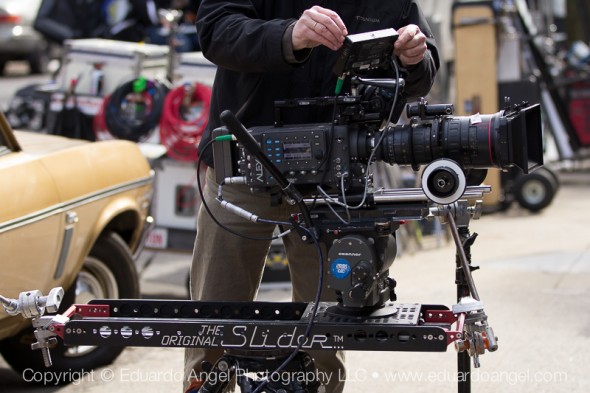Video
15 Valuable Lessons Learned on Movie Sets.
For a while I’ve wanted to share some small (but valuable) lessons I’ve learned while working on movie sets. The following list is in no particular order; however, I will say that the first item of business in any shoot should be deciding where the camera should be placed. Everything else follows this decision.
• There’s cable wrangling and data wrangling, and as hierarchy goes, there’s a big difference between the two.
• The digital imaging technician (DIT) does a lot more than just data wrangling. He needs a deep knowledge of cameras, color, RAW workflows, monitors, backup strategies, etc.
• Film sets mimic an army in battle. Things need to get done as quickly and efficiently as possible, and the chain of command should always be clearly established. Some resources may be underutilized, but it’s important for everybody to know their place.
• It’s not a bad thing to change your regular schedule. If you normally wake up at 7 a.m., try waking up at 5 a.m. for a couple of days. It will seem like a totally different world when you step outside to shoot.
• “Continental Breakfast” often means mediocre lukewarm coffee and bagels. Have a good breakfast at home before you set out.
• Days are long, lasting 12 hours on average, with “Crew Calls” at 6:30 a.m. and “Wrap Ups” at 7 p.m.
• “Quiet on the set,” really means “shut up and don’t even think about moving a finger.”
• Sound is key. Wireless sets for the director, AD, producer, and other key people are used.
• The location manager does a lot before the shoot. She scouts locations; acquires permits and insurance; and consults with law enforcement officials, neighbors, and landlords, etc.
• Nice people get more help. Be courteous and friendly, regardless of your job title.
• Be mindful of other people’s schedules, especially if they are volunteering their time.
• Specify camera right/left or monitor right/left. Good, large reference monitors with a split screen for both cameras are paramount. Many key decisions, like focus, framing, and exposure, are made by looking at these monitors.
• Working (and standing) all day does NOT burn all the extra calories you ingest at the free, catered buffet. Watch what you eat.
• Watch those watches (and clocks)! When doing multiple takes—which always happens—you could have editing issues if the time on the subject’s watch (or the clock on the wall) appears to fluctuate.
We always appreciate your input. Please feel free to share any lessons you’ve learned on movie sets.
